133 Days on Sun
NASA, the United States' space agency, conducts extensive research and observations of the Sun. They use satellites and telescopes to study the Sun's surface, atmosphere, and its effects on the solar system. One of their notable missions is the Parker Solar Probe, launched in 2018, which is designed to get closer to the Sun than any previous spacecraft. This research helps us better understand the Sun's behavior, solar flares, and space weather, which has important implications for Earth and our technology.Certainly! NASA's solar research is crucial because the Sun plays a central role in our solar system. The agency studies various aspects of the Sun, including its magnetic fields, solar wind, and the processes that lead to solar flares and coronal mass ejections. These events can have significant impacts on Earth's communication systems, power grids, and even astronauts in space.
One of the main goals of NASA's solar research is to improve our ability to predict space weather events. These predictions help mitigate potential damage to technology and infrastructure on Earth and in space. Additionally, understanding the Sun's behavior contributes to our knowledge of stellar evolution and the fundamental processes that drive the Sun's energy production.
NASA's Solar Dynamics Observatory (SDO) is another important mission. It provides continuous high-resolution images of the Sun's surface, allowing scientists to monitor changes and gather data about solar activity. This helps researchers track sunspots, flares, and other phenomena that impact Earth and the space environment.
Overall, NASA's ongoing studies of the Sun contribute to our understanding of both our immediate space environment and the broader universe.Certainly, here are some more specific details about NASA's research on the Sun:
1. **Parker Solar Probe**: Launched in 2018, this spacecraft is on a mission to study the Sun up close. It will eventually get closer to the Sun than any previous spacecraft, entering the Sun's corona to gather data about the solar wind, magnetic fields, and other phenomena. The goal is to understand the fundamental processes that drive the Sun's outer atmosphere and its influence on space weather.
2. **Solar and Heliospheric Observatory (SOHO)**: A joint project between NASA and the European Space Agency (ESA), SOHO has been observing the Sun since 1995. It provides detailed images of the Sun's atmosphere, studies its internal structure through helioseismology, and monitors solar wind and coronal mass ejections.
3. **Solar Dynamics Observatory (SDO)**: Launched in 2010, SDO provides high-resolution images of the Sun's surface, magnetic fields, and corona. It observes the Sun in multiple wavelengths, allowing scientists to study different layers of the solar atmosphere and track changes in solar activity over time.
4. **IRIS (Interface Region Imaging Spectrograph)**: Launched in 2013, IRIS focuses on a specific region of the Sun's atmosphere called the interface region. It studies how energy and heat are transported from the Sun's surface to its outer atmosphere, helping scientists understand the processes that create the Sun's complex magnetic fields.
5. **Solar Terrestrial Relations Observatory (STEREO)**: This mission consists of two spacecraft launched in 2006 to provide stereoscopic views of the Sun. STEREO studies coronal mass ejections as they move through space, helping scientists predict when these events might impact Earth.
6. **Solar Probe Plus (Scheduled)**: This upcoming NASA mission aims to launch a spacecraft into the Sun's corona to study its structure and mechanisms. It will provide close-up observations of the Sun's outer atmosphere and help answer questions about the solar wind's acceleration and the nature of solar flares.
These missions, along with ground-based observatories and collaborative efforts with other space agencies, contribute to a comprehensive understanding of the Sun's behavior, its impact on space weather, and its role in the larger context of stellar and planetary evolution.
-
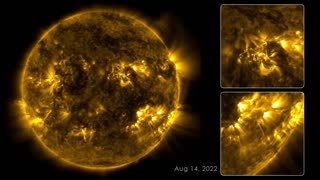 59:17
59:17
WadeParker47
1 year ago133 Days on the Sun
31 -
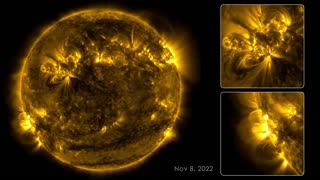 59:17
59:17
DigitalSpace1
1 year ago133 Days on the Sun
14 -
 59:17
59:17
Shahid0fficial
9 months ago133 Days on the Sun
2 -
 59:17
59:17
MyCompany1980
9 months ago133 Days on the Sun
17 -
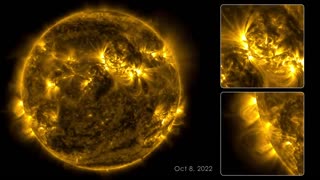 59:17
59:17
beyondthelens788
9 months ago133 Days on the Sun
2 -
 59:17
59:17
PUBG TRICKS
9 months agoDays on the Sun
11 -
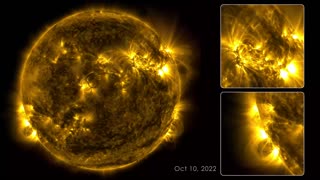 59:17
59:17
ScienceTecho
9 months ago14263_133_Days_on_the_Sun_1080
3 -
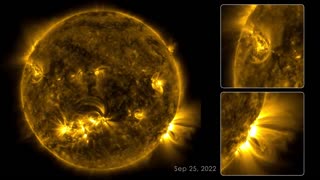 59:17
59:17
qazal033
9 months ago133 Days on the Sun
2 -
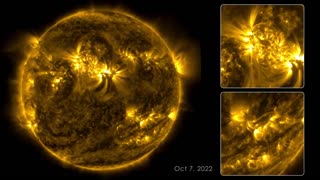 59:17
59:17
TechUniverseTV - Exploring the Limitless Frontiers of Technology
9 months ago133 Days on the Sun
14 -
 59:17
59:17
Jokser
1 year ago133 days on the Sun
2